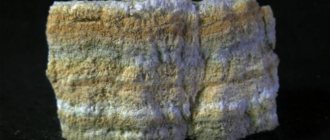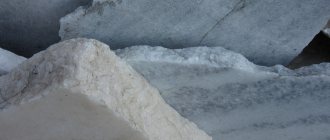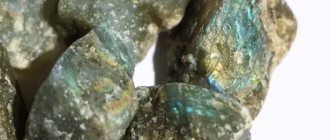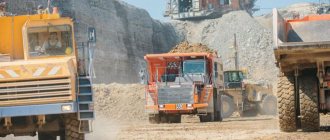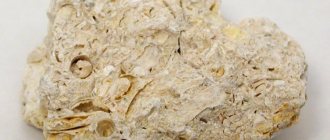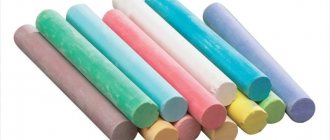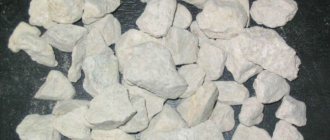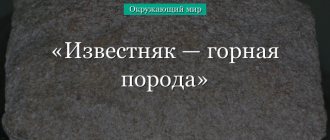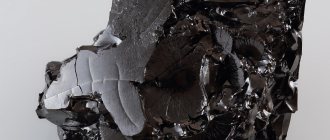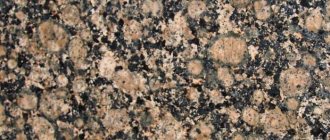Classification methods
All limestone rocks are divided into types, depending on their origin, composition of impurities, structure and structure.
Variety of limestone
By the nature of their occurrence they can be:
- Organogenic (biogenic origin). Organogenic limestone is formed during the accumulation of fossils of shells and other ancient marine life on the bottom of ancient seas. Most limestones are of this origin. Examples include reef limestone, slurry limestone, and shell limestone.
- Chemogenic. The cause of the formation of chemogenic limestones was the precipitation of calcium carbonate during chemical reactions. An example is pelitomorphic limestone.
- Secondary. This is the so-called detrital limestone, which was formed by the destruction of pre-existing limestones.
Marbled Limestone
Based on the composition of impurities, the most common limestone rocks are divided into:
- Marbled limestone. It is formed during the process of gradual compaction of this rock in the earth's crust and is a transitional stage between limestone and marble. Marbled limestone has a higher density.
- Dolomitized limestone (dolomite). This rock contains up to 17 percent magnesium.
- Marls. They contain a large percentage of clay as an impurity.
The structure of limestone rocks can be dense, marble-like, porous, and earthy. Marble-like limestones are characterized by a clear crystalline structure. Earthy limestones, on the contrary, are fragile and friable.
By color: white (for example, Myachkovsky limestone, white limestone), grayish, brownish, yellowish, light pink, brownish, reddish (red limestone); Dark colors are less common. Color and its saturation indicate the quantity and composition of impurities and inclusions.
Based on their application, limestone rocks are divided into:
Ground limestone
- Ground limestone. Has a powdery appearance. Used in construction for preparing mixtures. Ground limestone can be used as fertilizer. Ground limestone can also be used as a top dressing.
- Metallurgical (limestone flux). Used in metal smelting and alloy production.
- Construction (limestone for cladding). Used for cladding buildings and premises. Facing limestone can have good decorative qualities.
- Block. Used for the construction of buildings.
- Sawn limestone. Available in slab form. It is used for interior and exterior decoration of buildings.
- Rubble. Consists of individual cobblestones. Rubble stone is used in the construction of foundations (rubble foundation). The rubble foundation is characterized by great strength and durability.
Characteristics and origin of calcareous mineral
Natural stone limestone is a non-solid sedimentary rock with a maximum content of calcite. The rest of the mineral mass consists of inclusions of particles of other substances (silicon, phosphates, quartz, lime, etc.). Microparticles of the skeletons of simple organisms can also be found in the mass of calcium carbonate. The origin is generally characterized as organic, but there is also an organo-chemical path to the formation of the mineral.
The limestone mineral is mainly formed in the shallow water environment of the sea basin.
Freshwater conditions also allow limestone to be deposited. Its usual form of occurrence is a layer. It can be deposited according to the principle of salt: during the evaporation of water from lakes and lagoons. But the bulk of the stone originated precisely in the depths of the sea, where there were no intense processes of evaporation and drying.
The natural mechanism of mineral formation begins with the work of living organisms. They extract calcite from seawater and build shells. Then the remains of their skeletons accumulate on the bottom surface in a huge mass. The most significant example of the formation of calcite carbonate is the birth, growth and death of coral reefs. It is not uncommon for piece shells to be found on a fracture in a calcareous rock. This variety is called shell rock.
Other species are also named according to the types of organisms and their metabolic products:
- nummulitic;
- bryozoan;
- oolitic.
Marble-like limestone is a separate category. It, in turn, is divided into massively layered and thin-layered types. Under the influence of certain temperatures and pressure, it changes the structure of the crystals and is transformed into marble.
Where is limestone mined?
Limestone mining
This breed has an almost ubiquitous distribution, and the reserves of this mineral are enormous and will never be exhausted. It is mined in open pits. Heavy equipment is used for this purpose; the formation blasting method can be used. Huge limestone strata are found in North America, Europe and Russia. In our country, the western part is richer in it. In particular, the ridges of the Caucasus Mountains are often entirely composed of this rock. There are a large number of deposits in the center of the European part of Russia: Moscow, Tula, Voronezh, Belgorod and other regions. Large limestone deposits are being developed in eastern Ukraine (Donbass). There are deposits of rare limestones in Crimea.
conclusions
The performance characteristics and areas of use of crushed limestone are considered. A comparison of the characteristics of limestone and granite crushed stones is presented. It has been shown that while crushed limestone has some disadvantages compared to granite (in terms of strength, frost resistance), there are also advantages (in terms of environmental friendliness).
Taking into account the lower cost of crushed limestone and the wide range of areas for its use, we come to the conclusion that this material is promising in construction and industry.
Healing and magical properties of the mineral
The organic and pure composition of limestone allows you to successfully use its healing properties. This is an effective antiseptic that blocks the spread of infection throughout the body. That is why the natural stone, which does not cause allergic reactions, is used in limited quantities by traditional healers to alleviate conditions in many diseases.
The magical effect of limestone is similar to that of calcite. It also develops intuition in people, the ability to foresee actions and consequences.
With its energy, the stone attracts the attention of others to its owner on an emotional level. This property is often used by girls to attract a guy they like.
Limestone in history
Limestone can rightfully be called the oldest building material; there are more than two hundred of its varieties. Limestone was used in the construction of the Egyptian Pyramids, the Chinese Wall, and the Ggantija Temple in Malta. The fact that all of the above objects have survived to this day proves the strength and durability of this amazing material: limestone products do not lose their shape for many years.
In Rus', limestone began to be used back in the 12th century - then it was used for the construction of temples. Subsequently, many centuries later, this material found application not only in construction, but also in the art of interior design.
Properties
The use of limestone has been known since the construction of the Egyptian pyramids. The huge building blocks from which these historical and architectural monuments are made are of calcareous nature. The age of these structures is, according to some estimates, approximately 5,000 years.
The sphinx figure located nearby has even more ancient origins.
Sphinx figure
This characterizes the quality of this building material. Initially, the surfaces of the outer building blocks of the pyramids were polished to a mirror finish, which made the structures look like precious crystals from afar.
The main chemical component of the material is CaCO3, often in the presence of manganese, silicon, and iron compounds.
There are many varieties of limestone, such as shell rock, tuff, chalk, pisolite limestone, marl (a mixture of clay and calcite), and crystalline rock.
Shell rock
Coral reefs are also a variety of this material. All of the listed materials differ significantly in their physical characteristics and areas of use. The color of the minerals also differs, but white predominates.
Properties of limestone
Properties of limestone
Physical properties depend significantly on its composition and structure. Hardness varies greatly depending on its variety. Loose rocks (for example, shell rock) have a volumetric mass of only 800 kg/m3, while for limestones with a crystalline structure it can reach 2900 kg/m3. Compressibility depends on porosity and ranges from 0.4 MPa to 300 MPa. The lowest compressive resistance is characteristic of shell rock, and the highest is characteristic of crystalline rocks. When wet, it becomes less hard and its strength decreases. The same deposit may contain limestones with different strength values. Loose rocks such as shell rock and chalk are characterized by high abrasion and crushability. In general, these indicators are higher for limestone than, for example, for granite or marble. Brittle limestones have less frost resistance and are difficult to polish, but they are easy to saw and take the desired shape. Denser versions of this species, on the contrary, polish well, but are harder to saw. They also have higher frost resistance - from 300 to 400 cycles of freezing and subsequent defrosting.
Characteristics
Bulk density
For a more visual understanding of limestone crushed stone, its characteristics are compared with the corresponding characteristics of granite crushed stone. For limestone crushed stone, the characteristics are given for crystalline rock, which has maximum density (20-40) and strength.
The characteristics of different highly porous limestones vary greatly and are not discussed here. The most important characteristic of crushed stone is its bulk density.
Before considering this parameter, we present the density of the base material (monolith):
- limestone density – 2600 kg/m3;
- granite density – 2600 kg/m3.
Base Density
Despite the identical densities of the base materials, their compaction coefficient in a granular medium is somewhat different:
- bulk density of crushed limestone – 1200 – 1300 kg/m3;
- bulk density of granite crushed stone according to GOST No. 8267-93 – 1300 – 1400 kg/m3.
The following data is available for individual factions:
- bulk density of crushed granite stone of fraction 5 – 20 mm – 1350 kg/m3;
- bulk density of crushed granite stone of fraction 5 – 10 mm – 1380 kg/m3;
- bulk density of limestone crushed stone of fraction 5 – 20 mm – 1250 kg/m3;
- bulk density of limestone crushed stone fraction 10 – 20 mm – 1250 kg/m3.
Strength
This is the main indicator that determines the quality and specifies the area of use of crushed stone. When certifying a material, the strength is determined using specialized installations.
The strength of crushed stone is characterized by parameters called strength grades, which in order of increasing strength vary from M200 to M1400.
The range from M200 to M800 is typical for limestone, from M200 to M1400 – for granite crushed stone. Based on the given values, crushed limestone is somewhat inferior to crushed granite in terms of the considered parameter.
Frost resistance
This parameter characterizes the number of heating and cooling cycles within the maximum range of seasonal temperature changes before the degradation of the material properties begins. The interval for possible parameter changes is from F15 (withstands 15 cycles) to F400 (withstands 400 cycles).
Sand is the most important building material, because without it it is impossible to build a single building or structure. It's all about the bulk density of sand.
It is impossible to imagine finishing work today without tile adhesive. Here is its composition.
Currently, the use of decorative plaster in finishing has become very common among the population. By clicking on the link, you will become familiar with its application.
The climate of our country (except for its southern regions) allows the use of crushed stone with frost resistance F300 and higher. The frost resistance value of crushed stone is determined by its moisture content. Some types of granite materials have frost resistance F300, and limestone materials F150.
Radioactivity
This parameter illustrates the environmental purity of crushed stone. In order of increasing radiation hazard, given by specific radioactivity (Bq/kg), the following categories of crushed stones are recognized:
- low active (less than 370 Bq/kg);
- medium activity (370 – 740 Bq/kg);
- highly active (740 – 1350 Bq/kg).
Of all existing types of crushed stone, limestone is the most environmentally friendly (radioactivity less than 137 Bq/kg).
Flakiness
Flakiness is expressed numerically by the proportion of granules of non-standard (not cuboid) shape. These can be needle-shaped or flattened granules, for which the size in one of the dimensions (for example, length) is more than three times the size in the other two dimensions (width and height).
Flakiness
Granules of this type impair the compactness (density) of crushed stone, which causes increased consumption of the binder cement mortar.
Application of shell rock
Thanks to its exceptional qualities, this natural stone is simply irreplaceable both in housing construction and for other purposes. But there are several nuances that you need to know. Due to the difference in density, strength, color, and structure of shell rock, when purchasing, you must inspect each block for through holes and check the brand of the product. It is easy to test the brand for impact: how hard the block will crack.
The weight of the block must be at least 16 kg to guarantee the necessary strength and density. The most extensive application, of course, is in the construction of houses. Blocks with an untreated sawn surface can be used in the construction of walls, fences, and arches. The low thermal conductivity of shell rock walls will provide the room with comfortable warmth in winter and refreshing coolness in summer. For areas with an average climate, a wall width of 40 cm is sufficient. This material is “breathable”, so excess moisture easily evaporates through it, the house is always dry and optimal air humidity is maintained. And this prevents the appearance of mold. Good sound insulation will not allow street noise to distract you from enjoying your holiday. The healing properties guarantee improved well-being and good mood.
The strength and inertia of stone are the key to the longevity of the building. In history there are many architectural monuments built from shell rock and preserved in excellent condition to this day.
The porosity of the surface promotes strong adhesion to concrete, and the layer of mortar can be minimal, resulting in virtually seamless masonry. And this again has a positive effect on construction costs.
Thanks to the large size of the blocks, they are easy to work with: you don’t need the same skill as when working with bricks; you can do it yourself. It is enough to set the level correctly. It can be placed on any foundation; there are no special requirements for it.
Another plus in favor of shell rock: the block can be easily cut into pieces of the required sizes with a regular grinder with a circle of at least 180 mm. They will be required at the junction of walls and floor beams, in door and window openings.
Shell rock tiles are ideal for exterior finishing of facades. Light weight does not create additional load on the foundation. Its polished surface does not require additional processing.
Natural color harmonizes with the surrounding nature. Before facing the walls, they also do not require special preparation: the high degree of adhesion of shell rock to concrete guarantees reliable fastening to the facade and will hide its unevenness. Only for concrete mortar it is necessary to use fine river sand. If desired, the slabs can be easily painted in any color. The porous structure absorbs paint well and for a long time.
Polished slabs are also used in interior decoration, cladding of fireplaces and stoves. The ease of sawing allows you to give fireplaces any shape and shape. Low thermal conductivity will provide the outer surface of the block with pleasant warmth, despite the heat inside the fireplace.
In areas with high humidity, frequent rains, heavy snowfalls, after construction is completed, the walls must be treated with waterproofing agents, or clad in wood or brick with a gap for ventilation. You can also use mineral wool insulation or vapor-permeable plaster. If there is a road next to the house, then the facade can be treated with a special compound that prevents combustion products from settling. There are also means of protection against those who like to draw on the walls.
Various decorative items can be cut from shell rock: sculptures, flowerpots, various stands.
The unique pattern of shell curls on the cut will give the products elegance and lightness. By treating the surface with a protective composition, you can provide them, without exaggeration, with eternal life.
The rough (paving) surface of shell rock slabs is resistant to abrasion and is therefore used for cladding steps of stairs, porches, paths, and areas inside the yard. Where it is necessary to reduce or completely eliminate slipping.
Summarizing all of the above, shell rock is an excellent material for creating a beautiful, reliable and comfortable home for many years.
What are formations characterized by?
Among carbonate deposits, the following types of limestone are distinguished:
- dense carbonates (characterized by a homogeneous structure);
- oolitic formations of spherical shape;
- tuffs are formations with large pores, which are durable and easy to process (polished, grinded);
- travertine – sinter formations;
- clayey and bituminous limestones.
The coral limestone in the sediments is supplemented with an admixture of foraminiferal shells and mollusks, and echinoderm shells. The rock that makes up modern reefs has a hard, porous structure and consists of the skeletons of colonies of polyps.
Putilov limestone is known as the main building material used during the construction of the city of St. Petersburg. The name of the rock is associated with the Putilov deposit located nearby.
The density of limestone is average, it does not collapse under the influence of shock loads, and is resistant to abrasion, aggressive acidic environments and salts. It contains small voids formed as a result of rock leaching.
The color of limestone is gray, alternating with dark gray. The crystalline mineral formation of organogenic origin contains dolomite (2-25%), glauconite grains (up to 20%), phosphates (2-3%), grains of silicate compounds (quartz).
Due to its external similarity, limestone is often mistaken for marble. The difference between breeds lies in the form of their formation. For example, the black Portoro marble from which sculptures are created is a sedimentary rock. The structure of limestone is different from marble.
The formation of marble occurs through the process of metamorphic changes and recrystallization of rock. It contains no traces of fossils.
If the conversion process is not completed, the result is marbled limestone. It is this rock that contains white calcite inclusions of bioherms (corals), shells, and fragments of skeletons of other marine inhabitants.
The petrographic and mineralogical definition of the rock is “marble-like limestone.” In the literature on engineering geology, in the section devoted to the classification of rock types, incompletely transformed limestone is called marble.
Dolomitized limestone is a gray and dark gray sedimentary rock composed of calcite and dolomite. The mineral composition of the formations is formed by inclusions of gypsum, anhydrite and silicon, feldspars, pyrite, clayey matter and flora relics (blue algae).
The strength of limestone, which includes magnesium carbonate (about 40%), during compression is 400-1300 kgf/cm², the hardness of dolomite on the Mohs scale is 3.5-4.5.
Limestone mining
When extracting limestone, several methods are used to extract it from the bowels of the earth. These methods include:
- open career path. Considered the most common. With this method, the top soil layer is removed and a quarry is formed, in which pyrotechnic work can be carried out, through which portions of limestone are crushed and detached. The next stage of this method is to transport the stone to the place of its processing. Mining vehicles are used for this process.
- explosive way. In this case, the deposits are opened by removing the earth from them with bulldozers. After this, clay and substandard limestone are also removed from them. In places where limestone is mined, wells are formed into which explosives are placed. If this process is properly organized, fairly large limestone layers are broken off, which are transported by dump trucks for further processing.
- mining with a milling machine. This method mechanically converts the rock into crumbs. Thus, several processes are carried out simultaneously - crushing, loading and transportation.
It is worth noting that after extracting the limestone, the quarry should be filled with soil and also planted with herbs and plants. Typically, these actions are carried out in areas of large deposits. In small deposits, limestone is mainly mined using the explosive method. From such deposits, stone is extracted in the form of rectangular blocks. This occurs due to the creation of contour gaps.
It is worth noting that each of the methods is economically expensive to one degree or another. However, one of the cheapest options is to extract stone using an excavator and a hydraulic breaker. But there is the most economical way, which is to use a mining machine. This method is approximately 7% cheaper than the previous one.
How is it formed in nature, where is it mined?
The limestone rock appears in the seas from the shells of mollusks, algae, corals and other inhabitants of sea waters. To build shells, some sea inhabitants require calcite, the source of which is water. The remains of tiny creatures accumulate at the bottom and are cemented under water pressure. They can be held together and saturated with minerals by solutions and gas streams that seep through the bottom.
Freshwater conditions also allow rock to be deposited. It can be deposited as lakes and lagoons evaporate. A separate category is marble-like limestone, which under the influence of temperatures and high pressure becomes hard and dense.
The usual form of rock occurrence is a layer. The method of its extraction depends on the location, age and type of limestone. It is extracted in an open way, after preliminary development of the quarry. To do this, the top layer of soil and clay is removed, then pyrotechnic work is carried out, which makes it possible to crush limestone and detach portions of stone. Next, the material is loaded into machines and taken out for processing.
Initially, when mining, people used the breaking method - the material was removed with crowbars and the layers were knocked out using hammers. An alternative to the method is blasting, as a result of which the rock is crushed into crumbs. Using an excavator, it is collected, loaded into dump trucks and transported to factories for processing.
Currently, it is possible to do without an explosion, for which, instead of an excavator bucket, an attachment is used that loosens the rock. The most profitable way to extract limestone is with a milling machine. At the same time, it mines, crushes and transports limestone from the mine to the processing plant.
Application of limestone
Limestone is now a popular material and is being used in a variety of ways by landscape architects, decorators, and designers. This material occupies a leading position.
Limestone is primarily used as a building material. You can even build a multi-story building from this material, due to the strength of some types.
Lime rock can also be used for cladding buildings or designing paths.
Natural limestone can be an expressive decorative element
As you can see, limestone can be used as an independent material, but it is also used as an irreplaceable additional element. For example, its use in cement.
A well-known white limestone is chalk. We know it as a drawing medium, it is a component of tooth powder and some finishing materials, and is used in the manufacture of high-grade paper and even metal structures. Chalk is the main coating material for welding electrodes
It would be difficult to produce cables and rubber products without chalk.
Lithographic limestone is known to printers. A natural stone whose physical properties make it possible to create artistic engravings on its surface at a high professional level.
We also use limestone and dolomite in the metallurgical industry. And limestone mineral wool is the best insulating material in heating engineering. Even in the food industry, limestone can be used, for example in the production of sugar. Well, in the chemical industry its use is limitless.
Varieties of limestone according to different criteria
There are several criteria by which rocks are classified. The most important of them are structural features, texture, shade, and the presence of impurities. Based on the origin of limestone, the following types are distinguished:
- organogenic limestones (for example, oolitic, nummulitic): they contain many shells of once living mollusks;
- chemogenic - limestones formed as a result of chemical processes occurring in nature;
- clastic – include elements of pre-existing and destroyed marine reefs.
By structure and texture
The key criteria by which stones are classified are grain size and texture (an indicator of the ratio of parts of the rock with different structures). Limestones are distinguished according to these parameters:
- fine-grained, grains in the composition of this limestone are visible to the naked eye;
- fine-grained (chalk);
- oolitic (enlarged formations of calcite – oolites – stand out against the general background);
- porous: tuff, shell rock;
- layered: when cut, they resemble a cake made from layers of different composition and shade.
According to the characteristics of mineral composition and chemical impurities
According to the characteristics of the mineral composition and the presence of impurities, calcareous rocks are distinguished:
- Dolomitized. The structure of these limestones contains magnesium oxide. With an increase in the concentration of this chemical element in dolomitized limestone, dolomites are formed - sedimentary carbonate rocks.
- Clayey. They contain clay impurities, the excess of which above the norm leads to the formation of marl (clay - 25-50%, the rest - carbonate).
- Coral. They are formed in warm seas and have a porous consistency.
- Marbled. Characterized by high density and may be described as including ancient fossils.
- Bryozoans. Their structure contains dead algae and clay impurities.
- Cretaceous. They consist of the remains of algae and ancient mollusks. Sometimes they contain a small admixture of sand and clay.
- Bituminous. A rare type of rock in which impurities of petroleum products (bitumen) are found.
By mineral color
In its pure form, the breed is white or light gray in color. Impurities and chemical elements in white stone give limestone the following shades:
- Manganese. Colors the rock red, pink, brown.
- Iron. Gives the stone a yellow, beige, brown tone.
- Seaweed. The reason for the blue and blue coloration of the breed.
- Organic substances. They make the mineral dark, almost black.
Limestone-shell rock
Shell limestones are sedimentary rocks in the form of an accumulation of small shells cemented by calcareous deposits. They differ from ordinary finely porous limestones by their spongy, large-pore structure.
Shell limestones are used in construction in the form of building stone. The ability to be easily sawn, low density (from 0 8 to 1 8 g/cm3), low thermal conductivity are the characteristic properties of this material.
Shell limestones are used in construction. The ability to be easily sawn, low density (from 0 8 to 1 8 g / cm3), low thermal conductivity - all this makes it possible to reduce the thickness of the external walls of buildings compared to brick ones, which reduces the cost of construction.
In the southern regions of the country, organogenic limestone-shell rocks are a common material for masonry walls; The densest varieties of limestone are used for laying foundations, external (and partly internal) wall cladding, and crushed stone is used as a filler for concrete.
Organogenic limestones (for example, shell limestones) can be composed of whole shells or fragments of shells of various marine invertebrates, as well as remains of calcareous algae.
| Hydrogeological section of industrial site 3NI 4 along line II. |
Neogene deposits are fine clayey sands, gray limestone clays, limestone-shell rocks, and Paleogene deposits are dense viscous clays, calcareous sandstones and fine glauconic-nitrous-quartz sands.
Natural porous aggregates are mainly porous rocks of volcanic (pumice, scoria, tuff, large-porous basalts) and sedimentary origin (porous limestone, shell limestone, opoka), intended for use as aggregates for concrete and for thermal insulation.
| Basic indicators of the physical properties of marine Neogene clayey rocks. |
Carbonate rocks are most widely represented in the Pontic stage of the northern Black Sea region. Maeotis shell limestones have slightly higher strength characteristics.
| Water-absorbing gypsum, hydrophobized with 5% solutions of organosilicon water-repellent agents. |
Natural stones are widely used as facing materials for finishing many unique structures. Limestones, shell limestones, opokas, felsite tuffs, some dacites and andesites and other materials with decorative qualities are short-lived due to low weather resistance, significant water absorption and weathering. Hydrophobization of natural stone materials with organosilicon compounds preserves their decorative qualities and increases weather resistance.
Natural stone materials are used in construction as walling, facing and finishing materials. Limestones, shell limestones, opoka, tuffs and other materials have high architectural and decorative qualities, but significant water absorption and low weather resistance limit their use in construction.
Ivestkovo - marly deposits are represented by several varieties of limestones and mortars. The predominant distribution is of limestone-shell rocks.
In addition to clayey rocks, sands, sandstones, and limestones are found in Miocene deposits. Carbonate rocks (shell limestones, sandy limestones) are confined mainly to; Maeotic and Sarmatian stages.
Limestone deposits
Limestone deposits are widespread in the CCCP, especially in the Central Economic Region, the North Caucasus, the Volga region, the Baltic States, the Crimea, the Moldavian CCP, the Azerbaijan CCP, etc. The main deposits developed in the CCCP: Afanasyevskoye (Moscow region) - white limestone used for production cement; Barsukovskoe (Tula region) - fluxed limestone; Guryevskoye (Venevskoye) deposit (Tula region) - dense limestone used for crushed stone; Oknitskoe (Moldavian CCP) - shell-oolitic limestone for the production of sawn wall blocks; Bodraksko-Alminskoe (Crimea) - soft white shell sawn limestone for the manufacture of facing and wall materials; Shakhtakhtinskoe (Azerbaijan CCP) - grayish-yellow and light brown sawn cavernous travertine limestone for facing slabs; Zhetybai (Mangyshlak Peninsula, Kazakh CCP) - pink, light gray, cepo-yellow porous shell sawn limestone for facing slabs.
Characteristics of the mineral composition of the rock
In the table of Mohs hardness values, limestone takes 3rd place as the indicators increase. Its hardness corresponds to 3, and its density depends on the content of impurities, including dolomite, quartz and other minerals.
Substances included in the chemical composition of limestone can be destroyed by water and slowly decompose into corresponding bases with the release of carbon dioxide. These natural processes are sources of gas for mineral waters and factors contributing to the formation of karst caves in the depths of the earth.
When the temperature gradient increases to 200°C, the stone quickly decomposes, and lime is formed as a result of firing.
The formula for limestone, which is composed of calcite, is CaCO3. If the composition contains dolomite, then the chemical formula includes magnesium CaMg(CO3)2. Limestone rock, the composition of which is formed by shells and their fragments, is called shell rock (shell rock).
The color of the mineral is usually white or gray, but admixtures of organic substances change the rock, introducing black and dark gray shades. The presence of iron compounds in different concentrations gives a yellow, red or brown color.
What is limestone
Limestone is a mineral.
It comes in light or dark color. Structure with fine or large grains. The stone is formed over centuries at the bottom of reservoirs from sedimentary rock. It is found in the locations of ancient and modern oceans and seas.
In addition to calcium, natural stone also contains:
- sea lilies, urchins;
- corals;
- shells;
- shellfish;
- brachiopods;
- foraminifera;
- crinoids;
- fossilized fish skeletons.
The basis of the chemical composition is 50–95% calcium carbonate. The density of the mineral and the purity of its white color depend on the concentration of calcite. The stone also contains 5-50% quartz, feldspars, opal, dolomite, chalcedony or kaolin (clay). They color the mineral grey, pink, red, cream, black or blue.
Where is limestone used?
The breed is distinguished by its variety of uses in various fields:
- Construction
- Cement.
- Road.
- Metallurgical.
- Agricultural.
- Food.
- Glass
- Pulp and paper.
- Tanning.
- Paint and varnish and others.
The material is used in different forms:
- in the form of crushed stone;
- rubble stone, piece or lump;
- mineral powder or crumbs;
- sand;
- facing slabs;
- limestone flour;
- mineral wool.
In hydraulic structures, porous limestone is used as a water filter. This breed is in great demand when arranging the foundations of buildings. The components of ordinary limestone are lime and concrete.
Crushed stone is part of the road surface of routes that are not subject to frequent loads. Limestone is used to produce soda and is also the basis of numerous mineral fertilizers.
Limestone is good at splitting, cutting and sawing, and can be processed in any direction. The high thermal insulation properties of the rock and its durability make it possible to create a wide variety of high-quality building materials.
Formation of sedimentary rocks
Igneous rocks located on the surface of the earth, under the influence of changes in temperature and humidity, are gradually covered with a network of thin cracks that loosen the upper layers. Water freezing in cracks, increasing in volume, expands them, and the rock gradually breaks up into separate pieces and grains (sand).
This process, sometimes enhanced by the action of wind, is called physical “weathering” of the rock. The surface area of pieces of stone and grains of sand exposed to the atmosphere and water is much larger than the surface of the original massive rock, which increases the destructive effect of the environment. The most powerful effect is water with carbon dioxide and oxygen dissolved in it. For example, granite, under the influence of temperature fluctuations and the action of water containing carbon dioxide, is destroyed, forming natural crushed stone, sand (mainly quartz) and clay.
Flowing waters carry away crushed stone, sand, clay and other formed substances, and then deposit them in a new place, sorting insoluble particles by size. The removed soluble substances are subsequently deposited from supersaturated solutions during the evaporation of water or under other special conditions. Natural crushed stone is abraded by the movement of water or ice and turns into more or less rounded gravel.
Crystalline limestone
Crystalline limestones are composed of calcite crystals of various sizes. Organogenic limestones are the skeletal remains of animals (zoogenic) or plant (phytogenic) organisms, consisting of calcite or aragonite and their cementing mass - pelitomorphic (microcrystalline) calcite. Clastic limestones are fragments of previously formed limestones and calcite cement. Limestones with a mixed structure are transitional varieties between crystalline, organogenic and clastic limestones. These types of limestones are widespread. The lithological variety of limestone is chalk, which is a loose, weakly cemented, fine-grained rock consisting of fine organogenic and pelitomorphic calcite. There are other varieties of limestones - solitic limestones, limestone tuffs.
Marble is a crystalline limestone composed primarily of calcium carbonate; used for the manufacture of distribution boards. Marble containing copper pyrite, iron oxides or other conductive inclusions is unsuitable for use as an insulator.
Pegmatites cut crystalline limestones here and almost certainly borrow calcite from the host rocks.
The bulk of crystalline limestones is composed of micrograined calcium carbonate (55%), in places significantly recrystallized to fine-grained. Oil filtrates were obtained only at pressures of 5–9 MPa and higher. At lower pressures, oil unevenly, selectively, saturated the bulk of the rock without the appearance of filtrates.
Found in crystalline limestones.
ANTR ACONITE is a black crystalline limestone colored with a significant admixture of organic matter. Usually found in the form of nests, veins, lenses and radial spherical inclusions.
It is found at the contacts of crystalline limestones with acidic rocks, in pegmatite bodies and volcanic emissions.
The Tournaisian stage is composed of crystalline limestones.
Based on their physical properties, they distinguish between crystalline limestone (marble), dense limestone, earthy-loose limestone or chalk. In addition, there are calcareous tuff and limestone-shell rock. Mryamor is a dense rock (a product of limestone recrystallization) with a volumetric mass of 2650 - 2900 kg / m3 and a strength of 50 - 200 MPa. Dense limestones have a bulk density of 2200 - 2600 kg/m3 and a strength of 3 - 200 MPa. Chalk is composed of particles of a cryptocrystalline structure with a particle size of less than 0.1 mm.
Carbonate rocks: facies of crystalline limestones and dolomites with hydromica, sericite and chlorite and facies of marbled limestones and dolomites with muscovite, albite and epidote.
The upper member is characterized by the presence of crystalline limestones, distinguished as a clear electric reference lower limestone, with the presence of clayey siltstones and mudstones. At the top of the horizon lies an argillite member.
| Sataevskoye field. Map of deposit contours D. Geological profile (cross-strike. |
In the Stary Oskol superhorizon, there are productive layers of porous-cavernous rocks located among dense crystalline limestones.
By the nature of porosity, granular limestones belong to rocks intermediate between crystalline limestones with very uniform pores of small diameter and Cretaceous ones, which have heterogeneous pore space. As a general note, it should be noted that the lithology of strata composed of carbonate rocks is a decisive factor in determining their industrial value.
Metamorphic rocks include quartzites, marbles, jasper, schists, crystalline limestones and others. Metamorphic rocks have a crystalline-grained structure, similar to the structure of igneous rocks, and the parallel-linear arrangement of minerals is similar to sedimentary rocks.
Description and types
Based on their structure, limestones are distinguished as crystalline, organogenic-clastic, detrital-crystalline (mixed structure) and sinter (travertine). Among crystalline limestones, based on the size of the grains, they are distinguished into coarse, fine, and cryptocrystalline (aphanitic), and based on the shine on the fracture - recrystallized (marble) and cavernous (travertine). Crystalline limestone is massive and dense, slightly porous; travertine - cavernous and highly porous. Among the organogenic-clastic limestone, depending on the composition and size of the particles, they are distinguished: reef limestone; shell limestone (shell rock), consisting mainly of whole or crushed shells held together by carbonate, clay or other natural cement; detritus limestone composed of shell fragments and other organogenic fragments cemented by calcite cement; algal limestone. Organogenic-clastic limestones also include white (so-called writing) chalk. Organogenic-clastic limestones are characterized by large porosity, low volumetric mass and are easy to process (sawn and polished). Clastic-crystalline limestone consists of carbonate detritus of various shapes and sizes (lumps, clots and nodules of fine-grained calcite), with the inclusion of individual grains and fragments of various rocks and minerals, lenses of chert. Sometimes the limestone is composed of oolitic grains, the cores of which are represented by fragments of quartz and flint. They are characterized by small pores of different shapes, variable volumetric mass, low strength and high water absorption. Sinter limestone (travertine, calcareous tuff) consists of sinter calcite. It is characterized by cellularity, low volumetric mass, and is easy to process and saw.
According to the macrotexture and bedding conditions, limestones are classified as massive, horizontally and obliquely layered, thick and thin slabbed, cavernous, fractured, spotted, lumpy, reef, pound, stylolite, underwater landslide, etc. Based on their origin, they are classified as organogenic (biogenic), chemogenic, clastic and mixed limestones. Organogenic (biogenic) limestones are accumulations of carbonate remains or entire skeletal forms of marine, less often freshwater, organisms, with a small admixture of predominantly carbonate cement. Chemogenic limestones arise as a result of the precipitation of lime followed by recrystallization of the carbonate mass of sediments, mainly from sea water (crystalline limestone) or from deposits from mineralized sources (travertine). Clastic limestones are formed as a result of fragmentation, washout and redeposition of angular-rounded fragments of carbonate and other rocks and skeletal remains, mainly in marine basins and on the coasts. Limestones of mixed origin are a complex of deposits resulting from the sequential or parallel superposition of various processes of formation of carbonate sediments.
The color of limestones is predominantly white, light gray, yellowish; the presence of organic, ferrous, manganese and other impurities causes dark gray, black, brown, reddish and greenish coloring.
Limestone is one of the most widespread sedimentary rocks; it composes various landforms of the Earth. Limestone deposits are found among sediments of all geological systems - from Precambrian to Quaternary; the most intensive formation of limestones occurred in the Silurian, Carboniferous, Jurassic and Upper Cretaceous; make up 19-22% of the total mass of sedimentary rocks. The thickness of the limestone strata is extremely variable: from a few centimeters (in individual layers of sediments) to 5000 m.
Combined machines | KO-806
Key benefits:
- Simplicity
and
reliability
of the chassis; - Quick removal
of replaceable equipment; - Reliable
operation of the conveyor; - Compactness
of hydraulic equipment and its
protection
from dirt; - An improved body shape for
sand-spreading equipment, ensuring
a constant supply
of process material to the conveyor; - Good visibility when working with a plow
due to the installation of a special visor on the upper edge of the blade, which catches loose snow flying upward and directs it to the side. - protected by a Russian patent
, automatically dampens vertical vibrations.
Price: to be specified when ordering *
| Specifications: | |
| Chassis model | KAMAZ-43253 |
| Total vehicle weight, kg | 15500 |
| Weight of bulk materials loaded into the body, kg | 7800 |
| Working area width, m (when washing) | 8,5 |
| Width of working area, m (when watering) | 20,0 |
| Width of working area, m (with water irrigation) | |
| Working area width, m (plow) | 2,5 |
| Working area width, m (brushes) | 2,3 |
| Width of working area, m (when sprinkling) | 4,0 – 9,0 |
| Density of sprinkling with inert materials, g/m2 | 100 – 400 |
| Working water pressure, MPa | up to 2 (high-pressure rail) |
| Diameter of pipelines to be cleaned, mm | 50 – 300 |
| Pipeline length cleaned from one installation, m | 30 |
| Tank capacity, m3 | 7,8 |
| Transport speed, km/h | |
| Length, mm | 7400-10000 |
| Width, mm | 2550-3100 |
| Height, mm | 3200 |
Model Description:
Application of KO-806 series machines :
- washing and watering of road surfaces and runways;
- sprinkling the road surface with inert materials in winter;
- raking and sweeping snow;
- sweeping the pre-moistened road surface;
- cleaning of sewer networks and pipes (using additional equipment);
- filling the tank with water from the water supply network and reservoir;
- extinguishing fires.
Machines of the KO-806 series are equipped with watering, sand-spreading, plowing and brushing equipment
, as well as additional equipment for
cleaning
sewer networks and pipes, equipment for
filling the tank with water from the water supply network
fire extinguishing
kits , and for
watering green spaces
.
Additionally, equipment for distributing liquid reagents can be installed on the machine .
On KO-806 machines, instead of conventional watering equipment, equipment for
high-pressure washing
under a pressure of
2 MPa
. This equipment is intended for washing the roadway, bumper bars and road signs. *Prices are based on the price list for the Russian Federation
Weight of bulk materials, volumetric and specific values (Table)
Page 1 of 2
The reference table contains data on the bulk, volumetric and specific gravity of various building materials, as well as materials that are loads in building structures. The material weight table is intended for engineering and technical workers in design and construction organizations, as well as for transport and warehouse workers.
The table shows three categories of material weights: volumetric weight, bulk weight and specific gravity.
Volumetric weight is the weight of a unit volume of material presented in the form of a solid block, pieces, volume of liquid, stacked pieces with “their natural porosity or leaks in a pile, in a stack - for piece materials or compacted bulk material.
Bulk weight - the weight of a unit volume of freely poured material, while the table, if possible, indicates the packing density and the size of the pieces or grains of the material, on which the bulk weight largely depends.
The specific gravity of a material is a dimensionless quantity representing the ratio of the weight of a unit volume of a material substance to the weight of the same volume of water at 4°C.
Volumetric, bulk and specific weight of materials table
Symbols and abbreviations:
φ is the angle of repose of the bulk material.
t is temperature in degrees Celsius.
δ —thickness of the sheet, element.
W - humidity, d - diameter, mk - micron, l - wavelength, h - wave height.
* This shows the specific gravity of the material.
| Name of material and characteristics of its installation | Volumetric, bulk and specific gravity of materials in kg/m3 |
| A | |
| Iron ore agglomerate, φ=45° | 1700—2000 |
| Agloporite: crushed stone | 300—700 |
| sand | 500—1100 |
| Aminoplasty | 1450—1500 |
| Anthracite: large lump | 1500—1600 |
| in small pieces | 700—950 |
| Apatite is a rock, raw material for phosphate fertilizers | 2000—3200 |
| Apatite concentrate, φ=35÷37° | 1700—2050 |
| Asbestos in backfill | 300—800 |
| Asbestos in insulating mass 70% asbestos, 30% kaolin | 900—1000 |
| Asbestos concrete | 2100 |
| Asbestos paper, asbestos with filler (kaolin, etc.), δ = 0.2÷1.5 mm | 800—900 |
| Asbestos felt, δ = 5÷50 mm | 200—300 |
| Asbestos-diatom mass with lime (Diatomite 65-70%, asbestos 22-27%, “lime 6-8%) | 450—500 |
| Asbestos-magnesia mass (magnesite 85%, asbestos 15%) | 450—500 |
| Asbozurite - a mixture of diatom and asbestos | 500—800 |
| Asbestos cardboard, δ = 1 ÷6 mm | 900—1250 |
| Asbestos plywood: hard | 1700—1900 |
| soft | 1400 |
| Asboshifer | 1700—2100 |
| Asphalt mastic | 1100 |
| Asphalt mass | 1100—1500 |
| Asphalt: cast | 1500 |
| pressed | 2000 |
| in floors and screeds | 1800 |
| Asphalt concrete | 2000—2450 |
| B | |
| Babbitt: in pieces, foundry fight | 3500—4200 |
| in boxes and ingots | 3500—4200 |
| Bakelite, press powder | 1,35—1,4 * |
| Ballast: gravel | 1000 |
| sandy | 1500 |
| crushed stone | 2000 |
| Barin sulfate in bags | 580—650 |
| Barite (heavy spar BaSO4): in the form of small and large, up to 5 mm, crumbs | 2400 |
| dusty, sieve 400 holes/cm2 | 2000 |
| Batteries and galvanic cells in boxes | 580—730 |
| Bacon in boxes, bales | 440—550 |
| Miscellaneous linen in boxes, packs | 180—250 |
| Boehmite (roofing material), paper, rosin, bitumen, δ = 5 mm | 570 |
| Gasoline: in barrels | 450—650 |
| in cans | 500—700 |
| Birch: air-dry, W=10÷18% | 600—700 |
| raw, W>23% | 700 |
| in wooden structures protected from moisture | 700 |
| in freshly cut condition | 880—1000 |
| soaked | 700 |
| Beta light on: granular slags | 1100—1200 |
| expanded clay | 500—1800 |
| coke | 1200 |
| boiler slag | 1350—1450 |
| pumice crushed stone | 800—1400 |
| Large-porous sandless concrete | 1000—1900 |
| » acid-resistant | 2150—2500 |
| » fireproof | 1450—1750 |
| Ordinary concrete on: gravel or crushed stone, natural stone, vibrated or centrifuged | 2300—2500 |
| Ordinary concrete on: gravel or crushed natural stone, non-vibrated | 2200—2300 |
| Ordinary concrete on: sandstone | 2100—2500 |
| Concrete mixture with gravel in bulk | 2000—2400 |
| Extra heavy concrete: limonite | 2800—3000 |
| magnetite | 2800—4000 |
| barite | 3300—3600 |
| on cast iron shot, d = 0.8÷2 mm | 3500—3900 |
| on cast iron scrap | 3700—5000 |
| X-ray protective concrete based on: natural lump barite | 3000—3100 |
| pulverized barite | 2500—2600 |
| Liquid bitumen | 1080—1100 |
| Bitumen No. 5 | 970 |
| Bitumen mastics | 1350—1890 |
| Bitumen perlate, composition per 1 m3: perlite sand 1.75 m3, bitumen 120-160 kg | 350 |
| Various forms in bales | 550—700 |
| Lime-sand blocks | 1450—1600 |
| Beans in bulk, φ = 25÷32° | 400—800 |
| Beans in bags | 570—650 |
| Bauxite products (refractories) | 3100—3300 |
| Steel bolts: in bulk | 1430—1670 |
| in boxes | 1430—3230 |
| Hardwood curb stone | 2000—2300 |
| Tarpaulin bales | 380—450 |
| Coal briquettes | 1000—1100 |
| Bronze | 7500—8800 |
| Tin-free bronze | 8200 |
| Tin bronze | 8900 |
| Lingonberries in boxes, sieves | 300—350 |
| Rutabagas in bulk | 650—850 |
| Impregnated pavement beams | 900 |
| Beech: air-dry, W=10÷18% | 600—700 |
| in freshly cut condition | 970—1000 |
| in wooden structures protected from moisture | 700 |
| impregnated | 700 |
| Paper in rolls | 400—550 |
| in bales | 650—770 |
| in boxes | 500—650 |
| asbestos | 700—900 |
| drawing (whatman) | 1500 |
| Powdered borax in barrels, barrels, boxes | 600—700 |
| Empty bottles in baskets, boxes | 350—420 |
| Rubble: from hard rocks in a stack | 1600—1800 |
| limestone, stones 0.1–0.02 m3, in a stack | 1300—600 |
| sandstone, stones 0.1–0.02 m3, in a stack | 1400—1600 |
| IN | |
| Lining (wooden slats) | 600 |
| Cotton wool and batting: in bales | 130—200 |
| pressed in bales | 650—850 |
| Mineral wool (slag wool without inclusions) | 100—150 |
| Ropes and products made from them in bundles and without packaging | 280—440 |
| Vermiculite expanded | 100—300 |
| Vermiculite concrete | 250—1200 |
| Vetch seed) in bulk | 700—850 |
| Wines, liqueurs in boxes and barrels | 480—550 |
| Viniplast | 1,35—1,4 * |
| Winnpor (hard) thermal insulation material | 200 |
| Grapes in boxes | 500 |
| Mineral water, fruit water, etc. in bottles, in boxes | 440—590 |
| Vodka in bottles, in boxes | 440—590 |
| Felt: mineral (mineral wool) with binder | 250—300 |
| ordinary from wool waste | 100—300 |
| ordinary construction unpressed in bales | 300 |
| in bales | 500 |
| Fiber: acetate (cellulose acetate) | 1,3—1,35 * |
| viscose (hydrocellulose) | 1,5—1,54 * |
| jute pressed in bales | 300—620 |
| jute pressed in bales | 700—840 |
| hemp in bales | 640—860 |
| kapron (nolicaprolactam) | 1,14 * |
| lavsan (polyethylene terephthalate) | 1,38 * |
| flax and bales | 300 |
| nitrone (polyacrylonitrile) | 1,16—1,3 * |
| enanth (polyenantholactam) | 1,14 * |
| Blubber: t=15°С | 900—930 |
| in barrels | 670 |
| Beeswax: in bars, bags, boxes | 950 |
| in bars, bags, boxes | 430—540 |
| Elm: in moisture-protected wooden structures | 700 |
| in freshly cut condition | 1000 |
| G | |
| Liquefied gases in cylinders | 580—610 |
| Dry cement aerated concrete: thermal insulation | 400—700 |
| structural | 1100—1200 |
| Aerated concrete: cement-pumice, dry, thermal insulating | 300—650 |
| cement-slag, dry, on granulated light slag | 450—650 |
| cement-slag, dry, under normal hardening conditions | 600—1000 |
| Gas gypsum | 400—600 |
| Galalite based on casein in slabs, δ = 9 mm | 1250 |
| Pebbles | 1800—1900 |
| Nails in boxes | 770—1100 |
| Gypsum: lump, larger than 100 mm, φ = 30° | 1400—1450 |
| lumpy, finer than 100 mm, φ = 40° | 1330—1350 |
| ground dihydrate loosely poured | 600—800 |
| construction ground in a loose state | 650—1100 |
| construction ground in a compacted state, φ = 30° | 1250—1450 |
| Molding gypsum in bulk | 650—850 |
| Gypsum concrete on: boiler slag | 1300 |
| blast furnace granulated slag | 1000 |
| Cast plaster in products | 1000—1200 |
| Gypsum plaster, slabs (without packaging) | 1400—1620 |
| Dry clay powder | 900 |
| Clay mixture in the walls | 2000 |
| Clay: in the form of medium plasticity dough | 1450 |
| with boiler slag (clay 30 - 40%, slag 60 -70%) | 1000—1100 |
| fireproof ground | 1300—1400 |
| fireclay | 1800 |
| Glycerin in drums | 550—620 |
| Glucose in boxes | 550—800 |
| Croaker (obapol) in bulk | 500—700 |
| Peas, φ = 25° | 600—1000 |
| Hornbeam: in wooden structures protected from moisture | 700—740 |
| in freshly cut condition | 990—1000 |
| Gravel, φ = 30° | 1800—2000 |
| Granite: crushed (crumbs) | 1200 |
| in pieces | 1500 |
| Graphite; in barrels, boxes | 650—720 |
| in products | 1380—1570 |
| powdery | 440—450 |
| Graphite impregnated with phenol-formaldehyde resin (igurite) | 1500—1860 |
| Unhulled buckwheat, φ = 28-30° | 550—700 |
| Soil: in embankments | 1600—1800 |
| silty dry | 1600 |
| muddy wet | 1700 |
| loess-like | 1800 |
| marly dry | 1700 |
| marly wet | 2000 |
| Pear, air-dry wood | 730 |
| Tar | 930—1000 |
| Pressed sponge in bales | 200—250 |
| D | |
| Datolite concentrate | 1500 *; 1720 |
| Dextrin in bags | 500—550 |
| Jute: (garbage) in bulk | 160—190 |
| pressed, in bales | 380—460 |
| Delta birch wood, phenol-formaldehyde resin plywood | 1150—1400 |
| Turf | 1300—1400 |
| Diatomite; and loose state, in powder | 300—700 |
| lumpy | 1350 |
| Dinas in refractory products | 1700—1900 |
| Dolomite: in pieces, φ = 40° | 1350—1800 |
| caustic ground in a loose state | 1080—1100 |
| Shit in packs | 300—350 |
| Birch firewood: dry | 500 |
| raw | 650 |
| Softwood firewood: dry | 350—450 |
| raw | 500 |
| Yeast in boxes | 750—820 |
| Oak: air-dry, W=10÷18% | 700—800 |
| freshly cut | 1000—1030 |
| in wooden structures protected from moisture | 700 |
| impregnated | 800—900 |
| Melons in bulk | 450—550 |
| E | |
| Spruce; air-dry, W=10÷18% | 450—500 |
| in freshly cut condition | 800—850 |
| in wooden structures protected from moisture | 500 |
| soaked | 700 |
| AND | |
| Reinforced concrete on: limestone crushed stone vibrated | 2450 |
| crushed limestone non-vibrated | 2350 |
| expanded clay | 1500—1800 |
| pumice | 1100—1500 |
| gravel or crushed stone made of natural hard rock non-vibrated | 2400—2500 |
| gravel or crushed stone from natural hard rock vibrated | 2550-2650 |
| Iron: disulfide (pyrite) FeS2 in a dense body | 4950—5000 |
| roofing sheets in packs | 3000—4500 |
| sulfuric acid ferrous FeSO4 | 3300 |
| White tin in boxes | 3350—3670 |
| Cotton cakes in bales | 780—850 |
| Acorns in bags | 470—520 |
| Dry pulp in bulk | 200—260 |
| Z | |
| Backfill made of: expanded clay | 500—900 |
| tripoli | 600 |
| pumice and tuff | 400—600 |
| small construction waste | 1100 |
| Backfill: hydrophobic sand | 1500 |
| peat | 150 |
| slag | 700—1000 |
| Vegetable soil: dry in a dense body, φ = 40° | 1300—1500 |
| natural humidity in a dense body, φ = 45° | 1600—1800 |
| dry, in a dump | 1200 |
| Ash: dry | 400—600 |
| wet | 700—900 |
| oil shale | 600—750 |
| wood fuel | 450—700 |
| coke | 750 |
| AND | |
| Limestone: in passivated blocks | 2200 |
| crushed, φ = 35° | 1400—1600 |
| ground | 900—1100 |
| porous | 2000—2100 |
| dense | 2400—2900 |
| marble-shaped | 2600—2800 |
| shell rock | 1000—1800 |
| Baku | 1500—1800 |
| Kerch | 1200—1500 |
| Moldavian | 1500—1600 |
| Odessa, Crimean, North Caucasian | 1000—1300 |
| Slaked lime (fluff): and loose state | 150—550 |
| in a shaken state, φ = 35° | 600—800 |
| Slaked lime in dough, W = 50% | 1200—1400 |
| Quicklime: ground in a loose state | 700—800 |
| ground in a shaken state | 1100—1200 |
| lump, φ = 35° | 700—1300 |
| Lime bleach and powder | 600—830 |
| Tiles in packs | 1450—1650 |
| Ilm: in wooden structures protected from moisture | 690—700 |
| in freshly cut condition | 930—1000 |
| Carpentry, plumbing and other tools in boxes | 450 |
| TO | |
| Casein: bagged | 250—350 |
| in barrels, boxes | 320—550 |
| Cocoa beans in bags | 250—340 |
| Kalin chloride in bulk | 850—980 |
| Calcium sulfate CaSO4 | 2,95 * |
| Stone: cobblestone in bulk | 1800 |
| granite in blocks, in bulk | 2500—2700 |
| diabase in blocks, in bulk | 2200—2800 |
| shell rock in bulk | 1100—1400 |
| tuff in bulk | 1000—1200 |
| Concrete hollow stones on: crushed stone | 1100—1900 |
| slag | 800—1600 |
| Solid heavy concrete stones on: heavy gravel or crushed stone | 2100—2400 |
| brick or limestone crushed stone | 1800—2100 |
| Stones: gypsum concrete | 1100—1500 |
| clay concrete | 1900 |
| ceramic hollow with vertical voids | 1100—1400 |
| Chopped reed | 175—200 |
| Reed: in slabs, machine pressing | 310 |
| in mats, manual pressing | 190 |
| Ropes in coils | 240—360 |
| Rosin in barrels | 550—670 |
| Kaolin powder | 520 |
| Cabbage in bulk | 550 |
| Calcium carbide in drums | 850—970 |
| Carborundum products, refractories | 2000—2600 |
| Cardboard: ordinary | 700—800 |
| dense | 1000 |
| paper wavy | 150 |
| Bulk potatoes, φ = 30° | 700—750 |
| Rubber in boxes | 380—480 |
| Quartz: crushed | 1450—1600 |
| dusty (marshalite, “Ural”) | 960— 1500 |
| Cedar: air-dry | 450—500 |
| in freshly cut condition | 850—880 |
| in wooden structures protected from moisture | 500 |
| impregnated | 550—700 |
| Expanded clay | 250—1200 |
| Asbozurite brick | 900 |
| Clay brick: porous | 1100 |
| semi-dry pressing | 1800—2000 |
| plastic pressing | 1700—1900 |
| iron ore | 1800 |
| hollow semi-dry pressing | 1400—1500 |
| hollow plastic extrusion | 1250—1450 |
| Brick: dinas | 1800—2000 |
| acid-resistant | 2400—2600 |
| lightweight trolley | 700—1400 |
| magnesite | 2560—2600 |
| adobe | 1600 |
| silicate | 1600—2000 |
| raw | 1700—1800 |
| fireclay | 1800—2000 |
| chromomagesial highly fire-resistant | 2800 |
| Masonry: rubble concrete | 2200—2300 |
| rubble soft limestone | 1970—2000 |
| rubble made of dense limestone | 2200—2300 |
| rubble sandstone | 2200—2300 |
| made of cinder concrete solid stones | 1420—600 |
| from slag concrete hollow stones (35% hollowness) | 1300—1415 |
| made of clay bricks with cement mortar | 1600—1900 |
| made of fireclay bricks | 1800—2000 |
| made of porous brick | 1100—1500 |
| hollow brick | 1000—1450 |
| made of sand-lime brick | 1800—1900 |
| granite planks | 2700 |
| limestone plank | 2500—2600 |
| sandstone plank | 2300—2600 |
| Clover | 350 |
| Office glue, bottles in boxes | 600 |
| Wood glue in boxes | 250 |
| Maple: in moisture-protected wooden structures | 700 |
| in freshly cut condition | 1000 |
| Beech parquet staves | 550 |
| Books in boxes, piles | 430—500 |
| Faux leather in rolls | 1300 |
| Coke: gas, φ = 40° | 360—500 |
| blast furnace embankment, φ = 45° | 400—500 |
| trifle | 1000—1400 |
| mining | 380—530 |
| peat | 275—400 |
| Sausages in wooden boxes | 500 |
| Ceramic packing rings, smooth: 26x25x3 and 50x40x5 mm | 535 and 530 |
| 100x100x10, 120x120x12, 150x150x15 mm | 590 |
| Smooth porcelain rings 8Х8Х1.5 mm | 600 |
| Bulk feed | 500 |
| Canned meat, fish and others in boxes | 800 |
| Bark: wood (unpacked) | 270—360 |
| oak (in bales) | 500—600 |
| Bonfire | 100—200 |
| Pars bone: air-dried, raw material for the production of superphosphate | 815 |
| raw | 880 |
| Coffee: roasted, in boxes | 320—400 |
| in bulk grains, φ = 30° | 750 |
| raw beans, in bags | 440—670 |
| ground, in boxes | 420—500 |
| Paints and dyes: various, dry in cans, barrels, drums, boxes | 500—650 |
| liquid (oil, enamel, varnish) in barrels, drums, boxes, cans, cans in boxes | 550—800 |
| Starch: packed in boxes | 300—400 |
| packed in bags | 590—750 |
| Creosote in bottles in baskets | 520—600 |
| Buckwheat | 720 |
| oatmeal, φ = 40° | 600—645 |
| pearl barley | 810—830 |
| millet, 1st grade | 825 |
| rice | 830 |
| barley | 670 |
| semolina in bags | 590—630 |
| oatmeal in bags | 350—400 |
| barley in bags | 480—610 |
| Xylolite (magnolite) | 1000—1800 |
| Tow: unpressed in bales | 150—200 |
| pressed in bales | 590—620 |
| Corn in grain in bulk, φ = 30÷40° | 700-800 |
| Copper sulfate in boxes, barrels | 670—710 |
| Bulk copper and zinc sulfate, φ = 45° | 1800 |
| L | |
| Varnish: nitroglyphthalic furniture No. 754 | 920 |
| PL-2 | 1090 |
| heald | 910 |
| FKF | 953 |
| FL-6 | 882 |
| 458, 15% | 1240 |
| 411, 15% | 1255 |
| Brass | 8500—8600 |
| Ice in pieces | 600 |
| Timber floatable current navigation | 825 |
| Softwood timber; round semi-dry | 650—700 |
| round raw | 750 |
| sawn semi-dry | 600 |
| Lemons in boxes | 350—450 |
| Regular linoleum | 1100—1200 |
| Linden: air-dry | 450—500 |
| semi-dry | 580 |
| freshly cut | 790—800 |
| Bay leaves in keels, bales, boxes | 150—300 |
| Larch: air-dried, W = 10÷18% | 600—650 |
| in freshly cut condition | 840 |
| soaked | 800—900 |
| in wooden structures protected from moisture | 650 |
| Gypsum sheets (dry plaster) | 1000 |
| Onions: in bags | 400—480 |
| in bulk | 500—580 |
| Loofah in bales | 40 |
| Husk: corn (bran) | 305 |
| oatmeal from filter | 285 |
| sunflower | 135—150 |
| wheat (bran), φ = 45÷50° | 300—350 |
| rye (ground bran), φ = 55÷60° | 300—375 |
| rice (coarse bran) | 220 |
| barley | 280 |
| Name of material and characteristics of its installation | Volumetric, bulk and specific gravity of the material in kg/m3 |
* This shows the specific gravity of the material.
____________
Source of information: REFERENCE TABLES OF WEIGHTS OF BUILDING MATERIALS / E.V.MAKAROV, N.D.SVETLANOV - MOSCOW: 1971.
- To the begining
- Prev
- 1
- Next
- In the end
